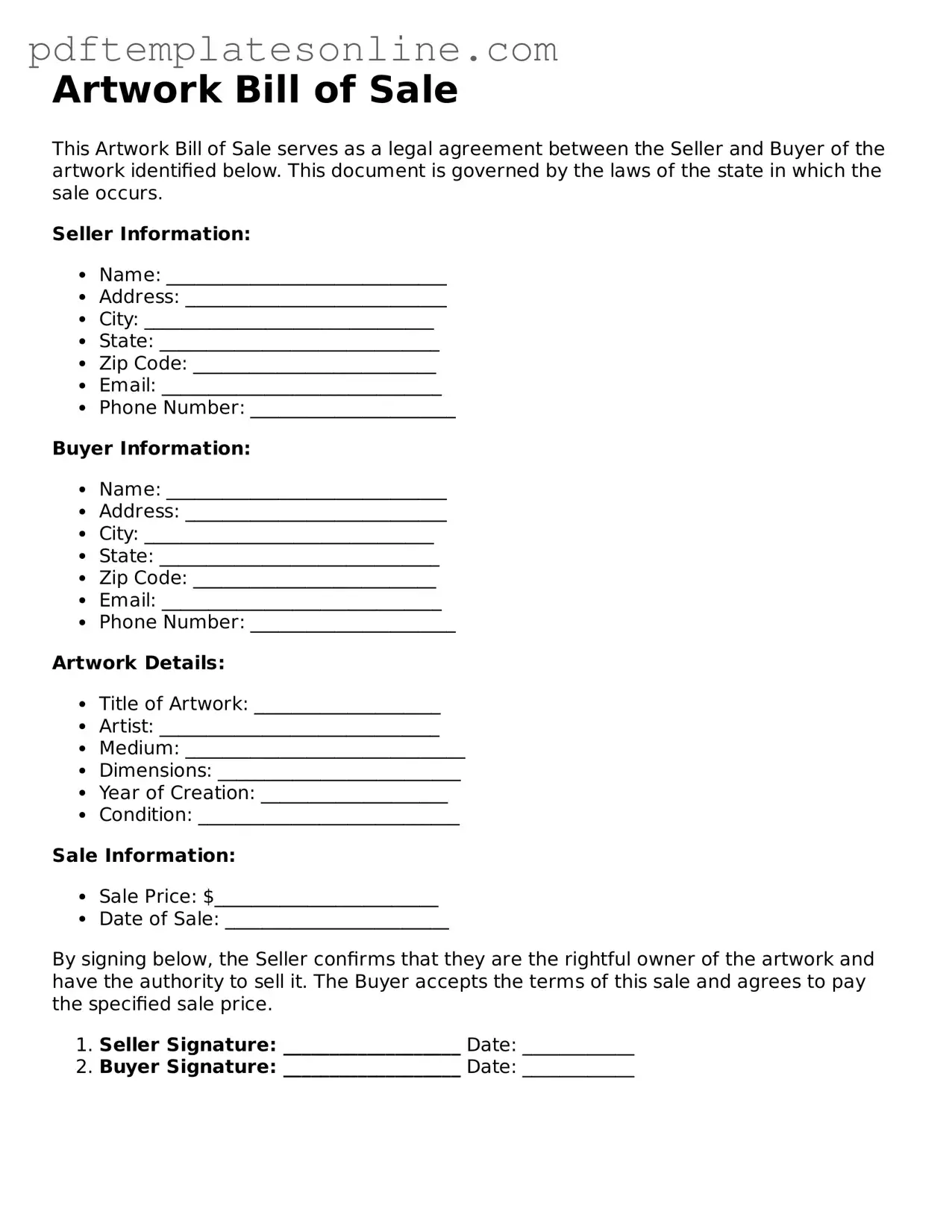When completing an Artwork Bill of Sale form, individuals often overlook critical details that can lead to misunderstandings or disputes later on. One common mistake is failing to provide accurate descriptions of the artwork. Buyers and sellers should ensure that the title, artist's name, medium, dimensions, and any distinguishing features are clearly documented. Without this information, the transaction may be questioned, and the authenticity of the piece could be called into doubt.
Another frequent error involves neglecting to include the date of sale. This date is essential for establishing the timeline of the transaction. It can affect the rights of both parties, particularly in cases of ownership disputes or when considering the artwork's provenance. A missing date may complicate matters if questions arise about when the sale occurred.
People also sometimes forget to specify the purchase price. While it may seem obvious, omitting this detail can lead to confusion about the agreed-upon amount. Both parties should be clear on the financial terms of the sale to avoid any potential disagreements in the future.
Inaccurate or incomplete contact information is another mistake that can have significant repercussions. Sellers and buyers should ensure that their names, addresses, and phone numbers are correct. This information is vital for communication, especially if follow-up questions or issues arise after the sale.
Additionally, some individuals fail to include signatures from both parties. A Bill of Sale is not legally binding without the signatures of both the seller and the buyer. This oversight can render the document ineffective in legal contexts, leaving one party vulnerable in the event of a dispute.
Another common error is not keeping a copy of the completed Bill of Sale. Both parties should retain a signed copy for their records. This document serves as proof of the transaction and can be crucial for future reference, particularly for insurance or resale purposes.
People sometimes overlook the importance of including any warranties or disclaimers. If the seller offers any guarantees regarding the artwork's condition or authenticity, these should be clearly stated in the Bill of Sale. Failing to do so can lead to misunderstandings and potential legal issues down the line.
Lastly, individuals may not take the time to read the entire form before submission. Rushing through the process can lead to errors that could have been easily avoided. Taking a moment to review the form ensures that all necessary information is included and accurately represented, ultimately protecting both parties involved in the transaction.
